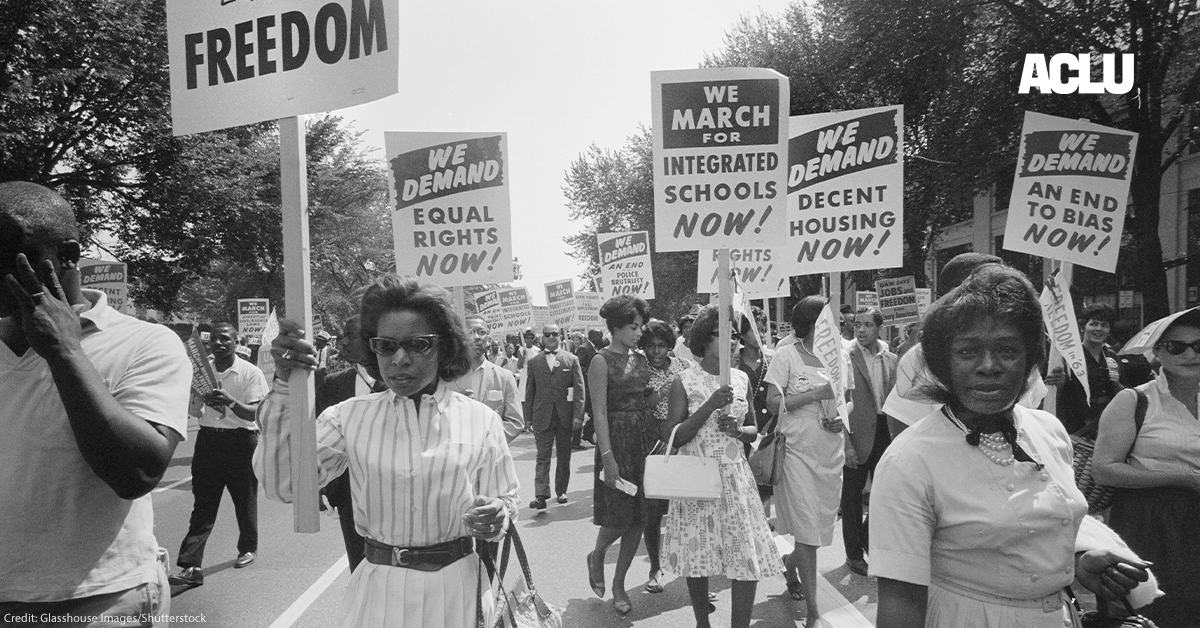President Donald Trump began February with a proclamation that Black History Month offered “an occasion to celebrate the contributions of so many Black American patriots who have indelibly shaped our nation’s history.” In the closing days of the month, he hosted a Black History Month reception at the White House where he promised he would fight for Black Americans. What he did not mention during his remarks was that the proclamation and reception came amidst a systemic crusade to dismantle the civil rights infrastructure that Black Americans helped build and that sustains our hopes for equal citizenship.
One of the first moves Trump made after his inauguration was to issue a wide-ranging executive order ending the federal government’s diversity, equity and inclusion (DEI) programs and firing the public servants who lead that work. He has moved to end affirmative action programs in federal procurement. He has threatened colleges and universities, intimidated non-profit organizations, and removed Black and women leaders from the nation’s military leadership.
Across the country, Black History Month proceeded against the backdrop of relentless attempts to erase Black history. Enemies of justice have sought to erase history so that past injustices cannot be connected to present inequities. Those who fear racial equality have always understood the importance of silencing stories that give people the hope and the means to build a better future. This whitewashing is a clear and present danger to an inclusive democracy. If Americans do not reflect on slavery’s enduring legacy, on Reconstruction and its violent backlash, on Jim Crow and its transformation into modern mass incarceration, then they cannot fully understand why racial injustice persists today and they will not be equipped to fight it. Now, with President Trump in office, the wind is at their back as he and his allies attempt to bludgeon Black history and Black futures at the highest levels.
But this is not just about how we study history. Much of American history can be understood as the struggle to build an infrastructure of racial justice. That includes the fight to end residential segregation and connect communities of color to opportunity, and the fight to pass and enforce laws like the Reconstruction amendments and the Civil Rights Movement-era laws that sought to move Black Americans closer to the American dream. What we are seeing today is a full-scale attack on that infrastructure; the deeply interconnected systems that make racial justice victories real. This infrastructure includes laws grounded in the 14th Amendment’s promise of equal protection under the law and the benefits of citizenship regardless of race; enforcement structures like the Equal Opportunity Employment Commission or the Civil Rights Division of the Department of Justice; pathways to upward mobility like the federal workforce; social norms that ensure fair treatment in businesses; the network of activists, educators, and journalists who inform and organize; and, yes, the teaching of Black history. The very laws and policies that sought to bring us closer together are being rapidly dismantled.
The fight for racial justice has never been won by laws alone. Legal rulings can declare rights, but they cannot enforce them. Legislation can assert equality, but it cannot guarantee justice. What makes racial justice victories real is the broader infrastructure that brings together the power and rights embodied in law, the enforcement mechanisms of both our laws and our social norms and customs, and the strength of communities to fight threats to their families and neighbors. This was the infrastructure that allowed Charles Hamilton Houston and other pioneers to lay the legal groundwork for Brown v. Board of Education. It was the infrastructure that allowed the Voting Rights Act of 1965 to not just outlaw discriminatory voting practices, but also mobilize communities to claim their right to vote. It was the infrastructure that opened doors to education and economic opportunities that had long been denied to Black people. It is this infrastructure that continues to hold up communities around the country who are fighting against industrial projects that would pollute their air and transportation projects that threaten to flatten their homes.
Yet, this infrastructure—built over centuries—is fragile. Today, the news is full of stories about attacks on affirmative action,DEI and people of color who have managed to find some measure of success in traditionally white spaces. Legal decisions, particularly from Chief Justice John Roberts’ Supreme Court have undermined the effectiveness of laws such as the Voting Rights Act, which is responsible for broadly expanding the right to vote in the face of vicious restrictions on Black voting; and policies such as affirmative action in higher education, which has increased access to higher education for underrepresented racial and ethnic groups who face systemic barriers to education and admissions criteria that capture and magnify racial bias.
In many ways, this has always been the way of history. Progress has always been met with retrenchment. We take two steps forward, and then one step back. Yet throughout the country, activists, political leaders, lawyers, and everyday Americans are organizing to resist the retrenchment, as they have throughout American history. The infrastructure of racial justice is fragile, yes. But it is not broken. If we protect it, it will remain standing.

